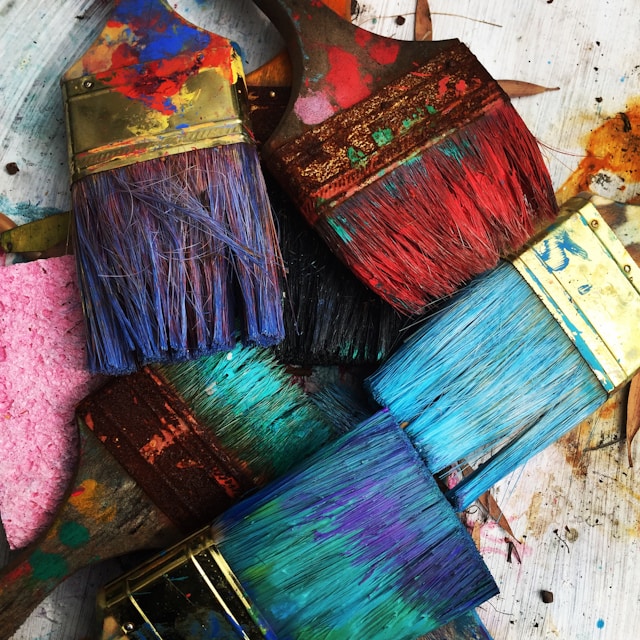Centuries ago, classical painters, sculptors, and illustrators established the groundwork for artistic expression. Contemporary 3D artists uphold that tradition, transforming enduring principles into digital works of art. Although the tools have advanced at Rendler Studio, the essence of artistry stays the same. This piece examines the deep connections between classical art and modern 3D design, highlighting the importance of composition, color theory, and light manipulation in creating impressive visuals.
The Legacy of Classical Art
For centuries, classical artists developed techniques that transcended mere representation. They mastered composition, balanced light, and shadow, and employed color theory to evoke emotion and depth. These artists also learned about anatomy, perspective, and the interaction of natural light—still crucial skills today. Classical art involved more than just making beautiful pictures; it focused on telling a story and evoking emotions through visual unity.
The influence of classical art persists in many forms. For example, the careful arrangement of elements and the application of vanishing points in artwork are techniques that remain significant. Creators like Leonardo da Vinci, Rembrandt, and Michelangelo established benchmarks influencing contemporary artistic methods. Their efforts motivate contemporary artists to explore the technical and aesthetic complexities that form the foundation of any thriving composition.
Modern 3D Artistry: Bridging Technology and Tradition
The evolution from canvas to computer screen has transformed artistic creation, yet many principles remain intact. Modern 3D artists harness advanced software to generate detailed images and animations. However, the creative process begins with a deep understanding of artistic fundamentals inherited from the classical era.
In 3D art, tools like advanced rendering engines and modeling software simulate realistic environments and objects. Despite the digital interface, the artist’s role in crafting these images mirrors that of classical painters. 3D artists must consider balance, composition, and color harmony when working on a complex architectural visualization or interior model. This duality of traditional art principles and digital technology sets modern 3D artistry apart.
An excellent example of this fusion is the 3D rendering of a kitchen. When creating such renderings, an artist must plan every detail—from the arrangement of objects to the interplay of light and shadow—just as a classical still-life painter would. Similarly, concepts like interior render and exterior render rely on the artist’s ability to emulate natural light conditions and construct a believable, aesthetically pleasing space.
The Art of Composition: A Shared Language
At the heart of classical and modern art lies the principle of composition. Whether setting up a still life on an easel or designing a virtual scene, the rules of composition guide the viewer’s eye and communicate the intended message. Classical artists meticulously arranged elements on a canvas to create a narrative, while modern 3D artists positioned digital objects within a virtual space to achieve a similar effect.
One critical element of composition is the understanding of spatial relationships. Classical art might involve techniques like the rule of thirds or the golden ratio, principles that create balance and focus on key elements. Today, these same rules apply when constructing a scene for an interior or exterior render. By employing these time-tested methods, 3D artists ensure that their work resonates emotionally and maintains visual coherence.
The subtle play of light and shadow can turn an ordinary scene into a striking image. Adequate lighting enhances depth and leads the observer through the visual story in Renaissance artwork and digitally created settings. Modern 3D artists, therefore, invest significant time in setting up virtual lighting systems, often referencing techniques from photography and classical painting to achieve a realistic effect.
3D Rendering Applications: Interior and Exterior Perspectives
In the digital realm, 3D rendering is used across a wide spectrum of applications—from architectural visualizations to entertainment media. A critical area of application is in the creation of interior and exterior renders. For instance, a 3D rendering of a kitchen not only displays the arrangement and style but also highlights the significance of aesthetic unity in interior areas. Like classical artists employed composition and perspective to animate scenes, contemporary 3D artists utilize these methods to craft engaging environments that enthrall viewers. While creating an interior render, the artist needs to take into account factors like furniture arrangement, surface textures, and ambient lighting.
These factors are analogous to the challenges painters face who aim to replicate the subtleties of an indoor scene. In addition, an exterior render requires an understanding natural landscapes, weather conditions, and architectural integration with the environment. The artistic choices made in these scenarios reflect a deep appreciation for traditional artistic principles.
This cross-pollination of methods is especially evident in projects where storytelling is as important as technical accuracy. At Rendler Studio, our method of 3D art is based on the same principles that directed classical artists. Whether we’re crafting photorealistic visuals or conceptual artworks, our team combines traditional composition methods with contemporary digital tools to create original and enduring pieces.
Contemporary 3D artists likewise find motivation in photography. When configuring cameras for virtual environments, they utilize concepts of exposure, depth of field, and framing—methods honed over many years in art and photography. This blending of artistic expressions emphasizes that no matter the medium, the core of great art resides in its capacity to convey messages and evoke inspiration.
The heritage of classical art is not limited to history; it continues to thrive globally via the digital screens of 3D creators. As technology advances, the essential elements of composition, lighting, and color remain crucially important.
Conclusion:
In conclusion, the artistic processes that form the foundation of classical and contemporary 3D artistry exhibit remarkable resemblances. From carefully applying composition and lighting to adapting photography techniques in digital environments, the skills that once defined great painters now define exceptional 3D artists. By integrating these timeless principles, Rendler Studio not only celebrates the legacy of past artists but also propels contemporary design and visualization forward.
